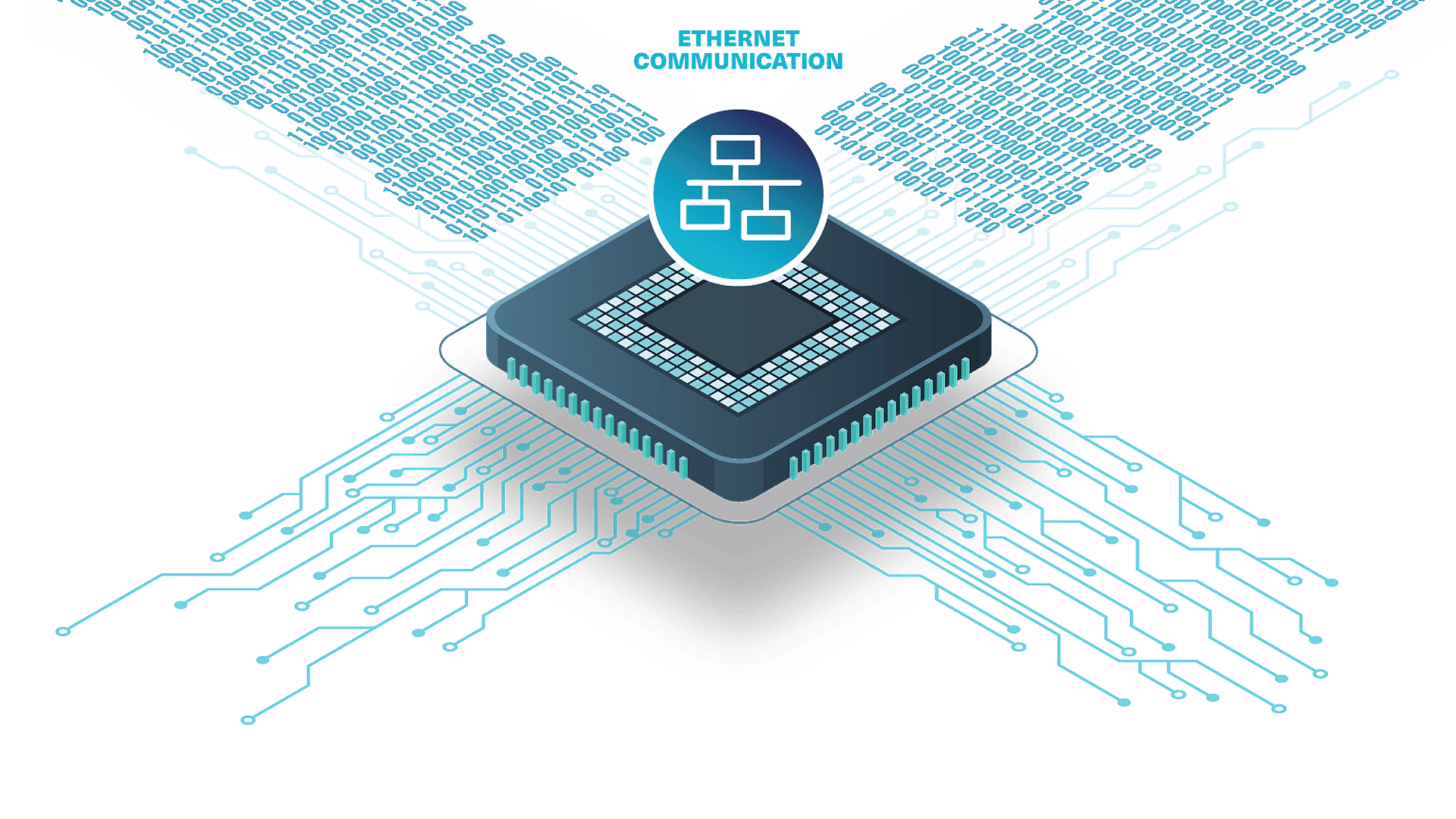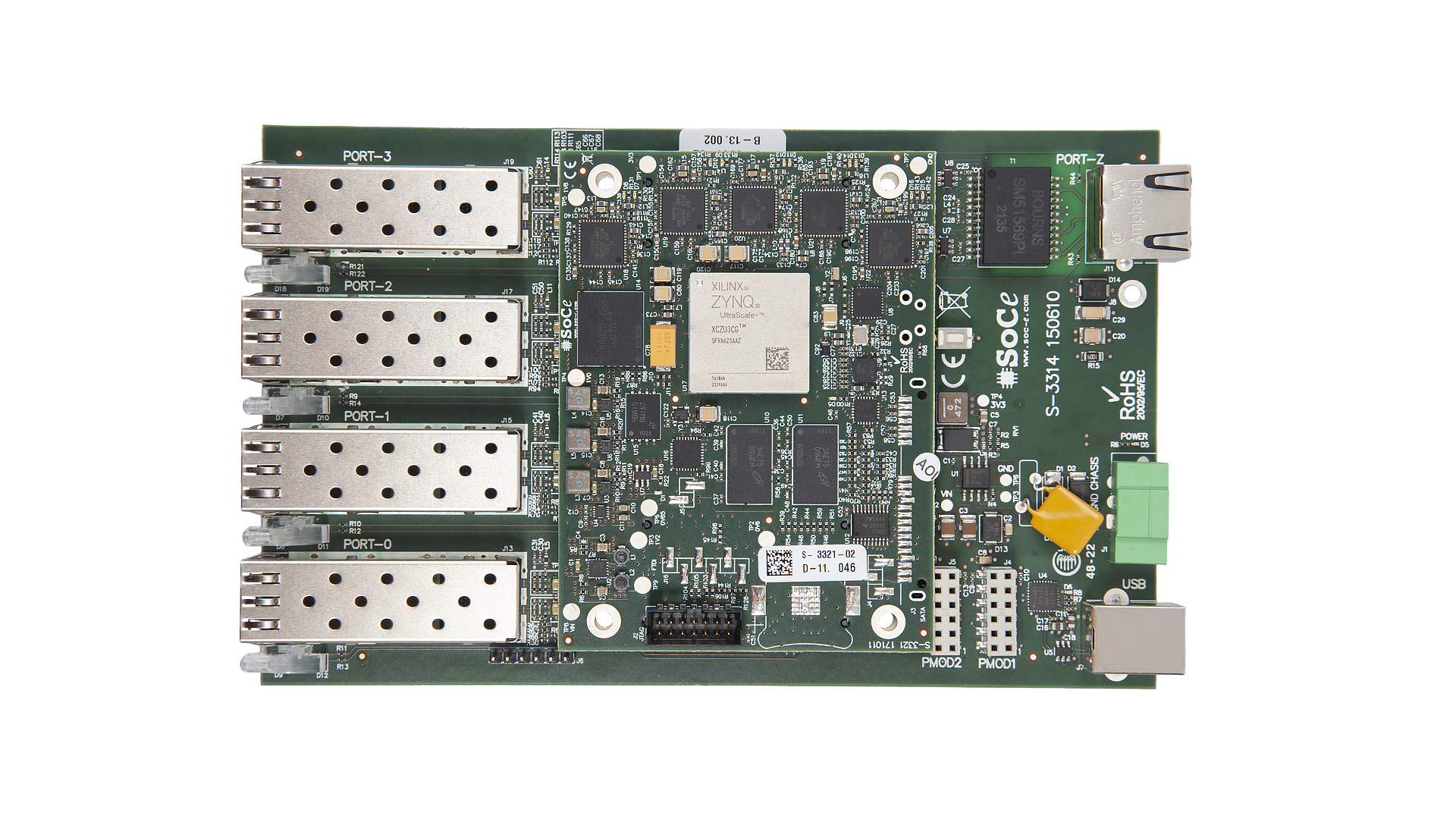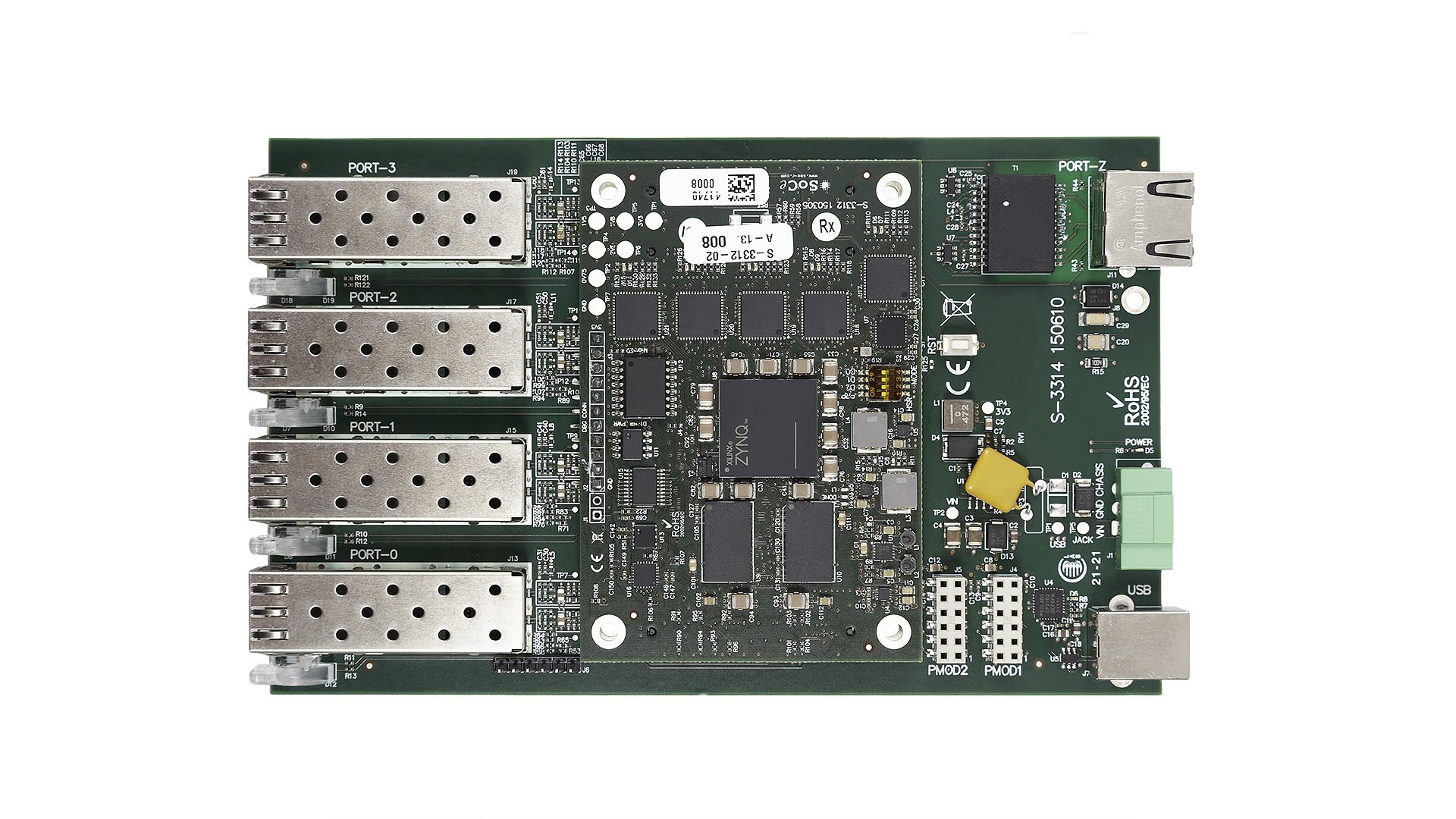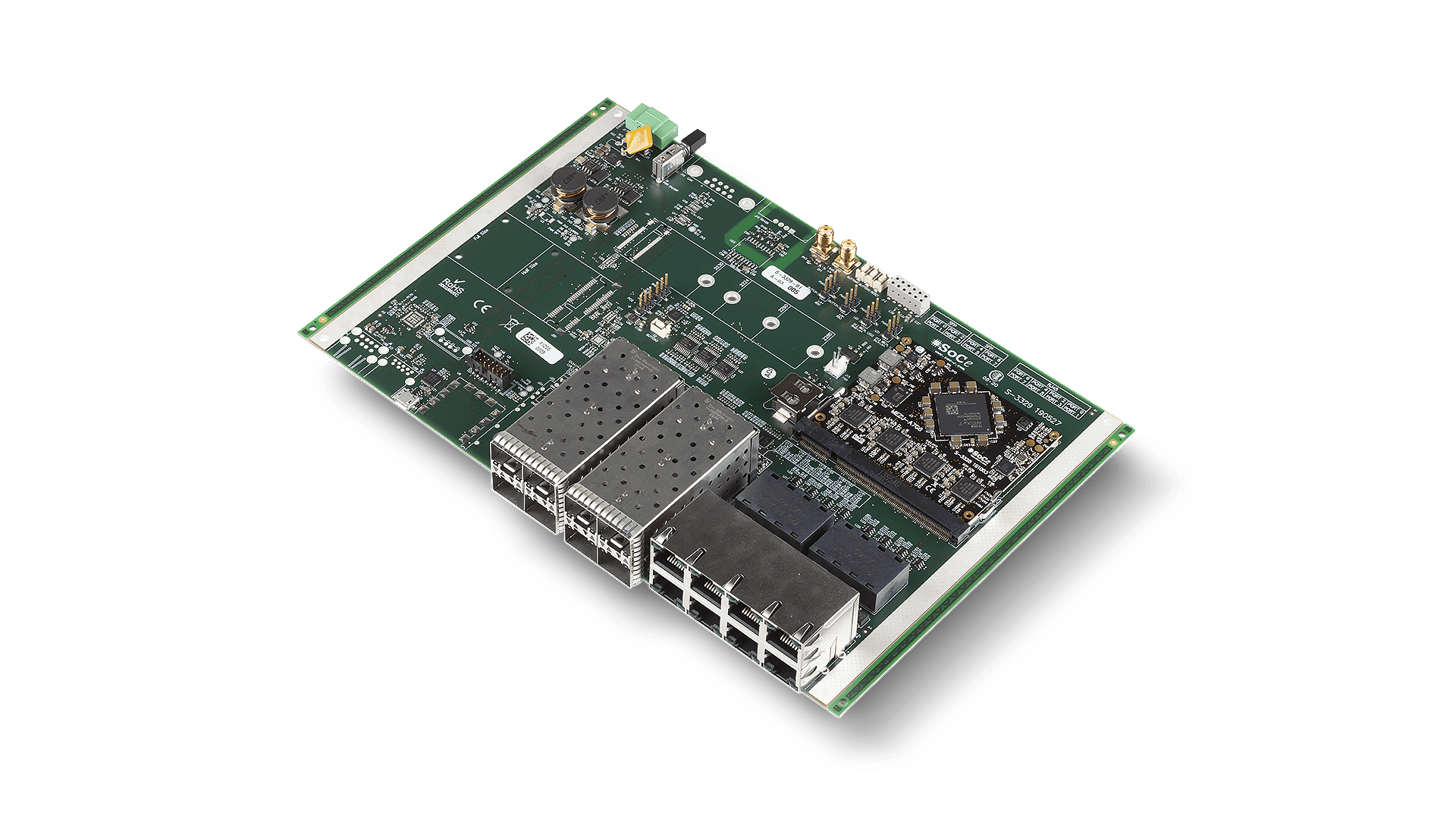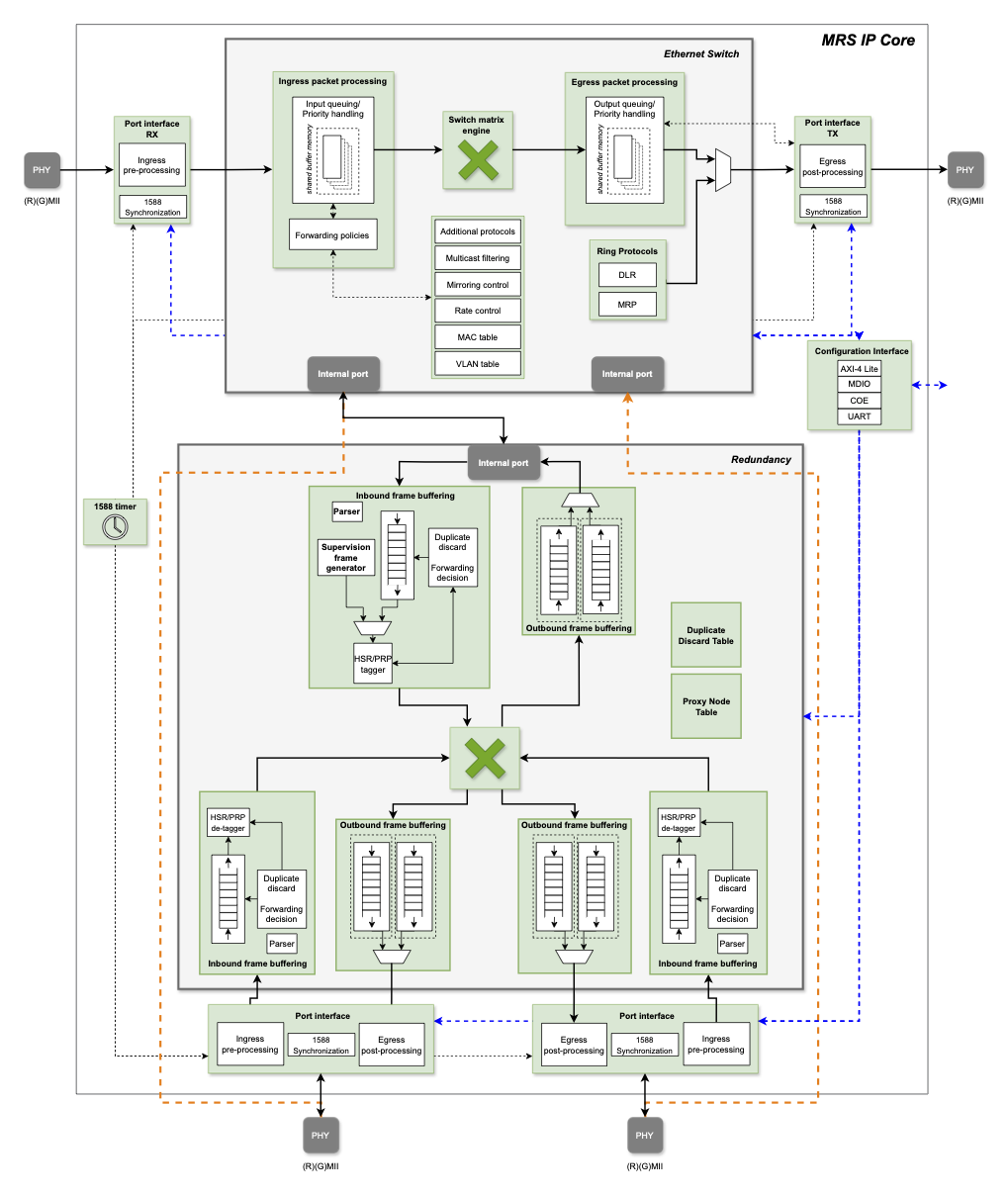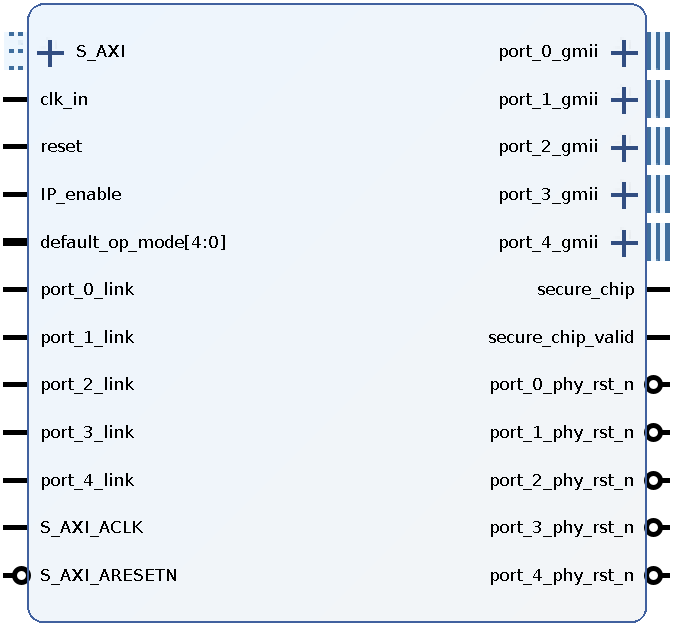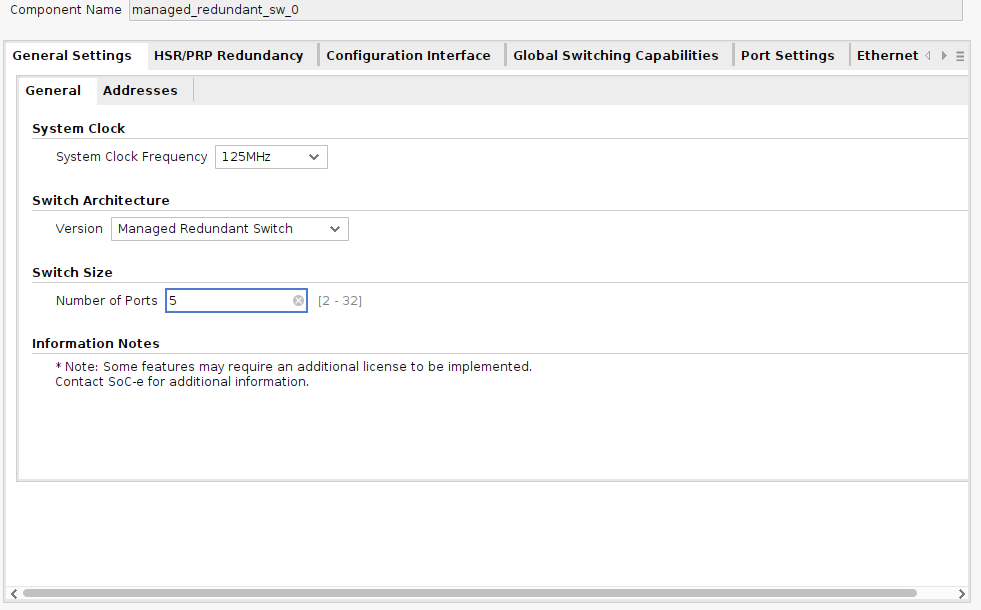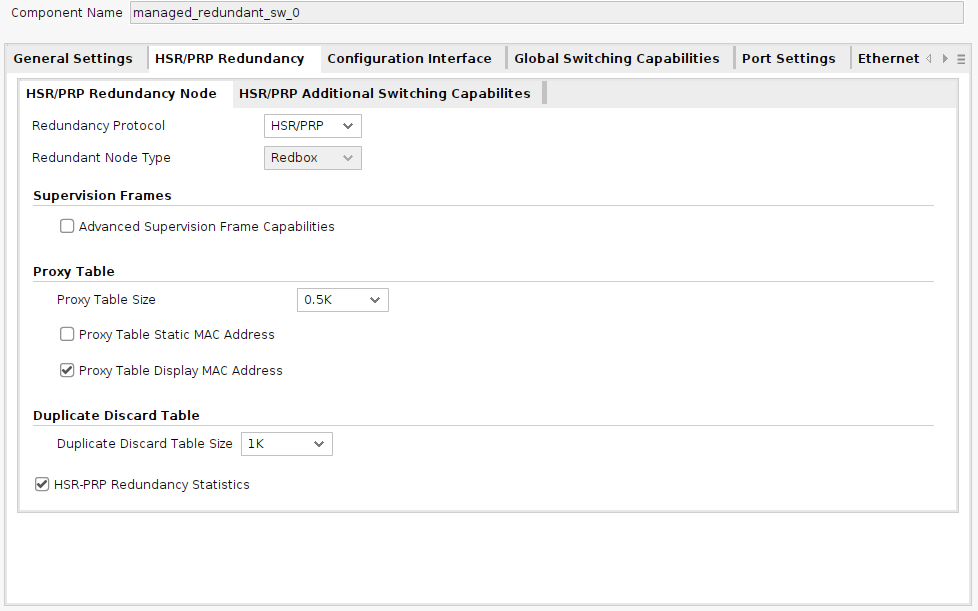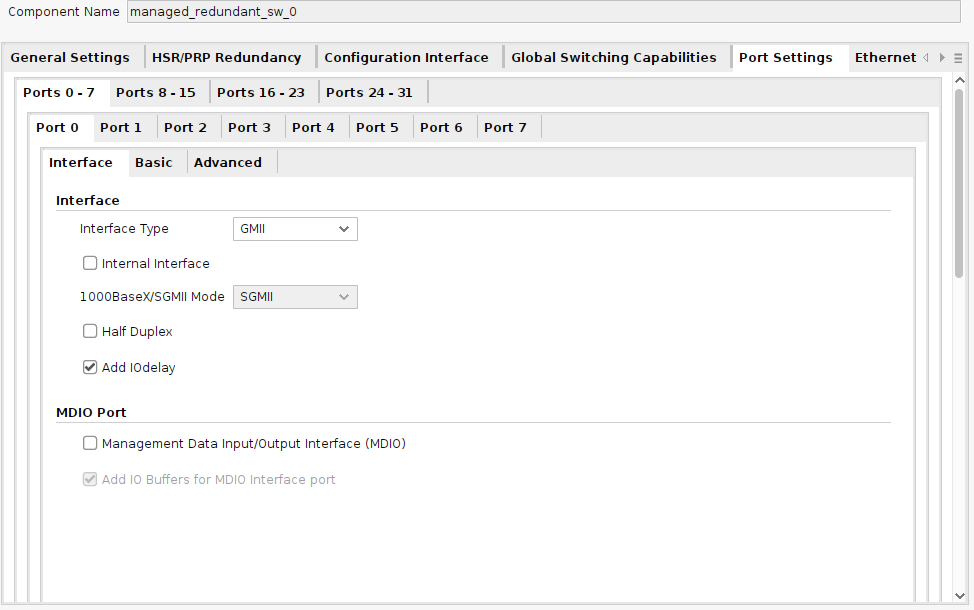Overview
MRS is an IP Core product that combines SOC-E MES IP Core and HPS IP Core in a single product. This implementation allows to combine regular ethernet ports with HSR/PRP capable ports in an easy way.
MRS implements a multi-port, multi-rate managed ethernet switch with a rich set of layer-2 configurable features as well as user selectable ports supporting High-availability Seamless Redundancy and Parallel Redundancy Protocol (HSR and PRP, IEC 62439-3 Clause 5 and 4 respectively) Edition 4.0 protocols for Reliable Ethernet communications providing zero recovery time.
All these characteristics enable a wide number of applications/sectors where the use of MRS IP Core is key. Automotive, Marine, Aerospace, Defence or Electric are examples of markets where our customers are already applying this technology.
Key Features
- Ethernet Switch IP “builder”Hundreds of user-configurable parameters allow obtaining the exact switch configuration required by the customer, ensuring efficient use of the available programmable logic resources.
- Zero Recovery Time Redundancy Protocol SupportThe IP core implements HSR and PRP redundancy protocols (IEC 62439-3) providing seamless Ethernet redundancy.
- Different Data-rate Per PortEach port speed and interface can be assigned independently.
- High-performanceUp-to 1G interfaces without HOL (Head-of-line) blocking effect.
- Fast & Smooth IntegrationGUI available for some FPGA vendor tools (i.e., AMD Vivado™ Design Suite) Drivers & software components included as part of the product deliverable.
- Evaluation Version AvailableEncrypted, time-limited version available.
Technical Specifications
- Communication Interfaces
- Integrated 10M/100M/1000M MACs for 10/100 Mbps and 1 Gbps PHY interface rates to use with any PHY interface type (e.g. MII, RMII, GMII, RGMII) depending on application
- Compatible with SGMII (Serial Gigabit Media Independent Interface) or QSGMII (Quad Serial Gigabit Media Independent Interface) PHY interfaces throughout an internal GMII based connection to AMD LogiCORE™ SGMII IP core and LogiCORE™ QSGMII IP core respectively
- 10/100/1000 Mbps AXI-Stream interface with a data width of 8 bits @ 125 MHz
- Half-duplex support in 10/100Mbps PHY interface rates
- Time Synchronization
- IEEE1588 (PTPv2): IEEE1588 Transparent Clock (TC) functionality (peer-to-peer) at layer-2 and layer-3 (IPv4)
- Traffic Management
- Integrated Ethernet switch fabric supporting up to 32 ports (number limited by the available resources on the device)
- Cut-through forwarding between HSR redundant ring ports for a very low forwarding latency independent from frame size
- HoLB (Head of Line Blocking) free switch fabric
- Shared Dynamic and Static Filtering Database. Implements hardware MAC address learning/ageing and look-up for up-to 9K absolute MAC addresses (synthesis scalable) at wire speed
- Independent VLAN Learning support for MAC address learning
- Searchable MAC addresses (and associated information) contained in the Filtering Database
- Programmable Frame Forwarding port mask to restrict frame forwarding towards port(s)
- Programmable Ethertype based Frame Forwarding to restrict frame forwarding towards port(s)
- Static Multicast frame filtering
- IGMP v1/v2 Snooping1 (IPv4) support for multicast frame filtering
- Standard Frame size support (1518) or Jumbo frames up to 9 kByte (depends on memory availability)
- Quality of Service
- Up to 8 priority queues per port (synthesis option)
- Priority classification based on Ingress Port, PCP bits (802.1p), DSCP TOS bits of the IP packets (IPv4 TOS/IPv6 COS) and Ethertype
- Programmable remapping from PCP or DSCP fields to internal priority queues on a per-port basis
- Programmable Priority Regeneration on a per-port basis
- Egress traffic prioritization based on Strict priority or Weighted Round Robin (WRR) scheduling algorithm
- IEEE 802.1Q tag-based and Port-based VLANs. VLAN manipulation functions on reception (VLAN insertion) and transmission (VLAN removal/overwrite)
- MAC Level Ingress Frame Filtering based of Destination MAC address and/or Ethertype on per port basis
- Token Bucket based Ingress Throughput Rate Limiting on per port basis
- MAC Level Ingress Frame Rate Limiting on per port basis
- Credit Based Shaper Egress Throughput Rate Limiting on per port basis
- Egress Frame Rate Limiting on per port basis
- Broadcast/Multicast storm protection
- Network Management & Monitoring
- IEEE 802.1D Spanning-Tree Protocol (STP) to prevent loops from being formed when switches or bridges are interconnected via multiple paths
- IEEE 802.1w Rapid Spanning Tree Protocol (RSTP) provides rapid convergence of spanning tree
- IEEE 802.1s Multiple Spanning Tree Protocol (MSTP) provides link availability in multiple VLAN environments by allowing multiple spanning trees
- Multisession port mirroring capabilities. Ingress and egress mirroring functions to allow copying of frames to a mirror port. Option for mirroring only filtered frames that match a specific data pattern.
- User/network port-level security via IEEE802.1X authentication and MAC-based filtering
- Host access control for only frames specified by the user (destination MAC and/or Ethertype based)
- Per port MAC and switch statistics for managing and debugging purposes
- Wide range of management interfaces to access control and statistics registers (selectable at synthesis time)
- I2C master interface for external device configuration (i.e. an EEPROM memory with non-volatile configuration)
- Ring Redundancy Protocols
- High-availability Seamless Redundancy (HSR). It can operate in any of the following modes, which are changeable at runtime:
- Mode H (mandatory, default mode): HSR-tagged forwarding
- Mode M (optional): Mixed forwarding HSR-tagged and non HSR-tagged
- Mode N (optional): No forwarding
- Mode T (optional): Transparent forwarding
- Mode U (optional): Unicast forwarding
- Mode R (optional): For RedBoxes to be connected to an RSTP bridge
- Parallel Redundancy Protocol (PRP). It can operate in any of the following modes, which are changeable at runtime:
- Duplicate Discard (default mode)
- Duplicate Accept (testing only)
- Others
- Distributed Switch Architecture (DSA) frame tagging to merge application specific messages to management port and to distribute application specific messages to a specific port
- Exclusive forwarding of known protocol specific frames or custom frames to/from management port
Technical Support, Verification & Deliverables
Technical Support
IP Licenses are provided along with a Technical Support package that ensures a direct communication channel with our highly experienced support engineers. This is vastly valued during customer product development & integration phases.
Verification
All our IP Cores are rigorously tested, hardware-validated and verified in real-life environments. A 3-phase based IP product verification is applied:
- Entity/Block-oriented simulation
- Global-oriented simulation
- In-hardware validation
Deliverables
- Encrypted/Source RTL code
- Software components: Drivers, configuration API & SW stacks
- Documentation (IP Core and Software components)
- (Optional) Networking Testbench Suite (NTS)
- (Optional) AMD Vivado™ design suite example design
Evaluation & Design-in Kit
This hardware can also be used later as a development platform, what allows to shorten the development phase.
